Are you ready for more tips for the beginner food photographer? I sure hope so. Before we get to it, here are the links to Part I and Part II, and scroll to the bottom for Part IV. And if you’re not already signed up for my Food Photography Snapshot (i.e., newsletter), be sure to do that over on the Resources Page.
[Note: I originally wrote this series in 2017, but updated it significantly in 2019.]
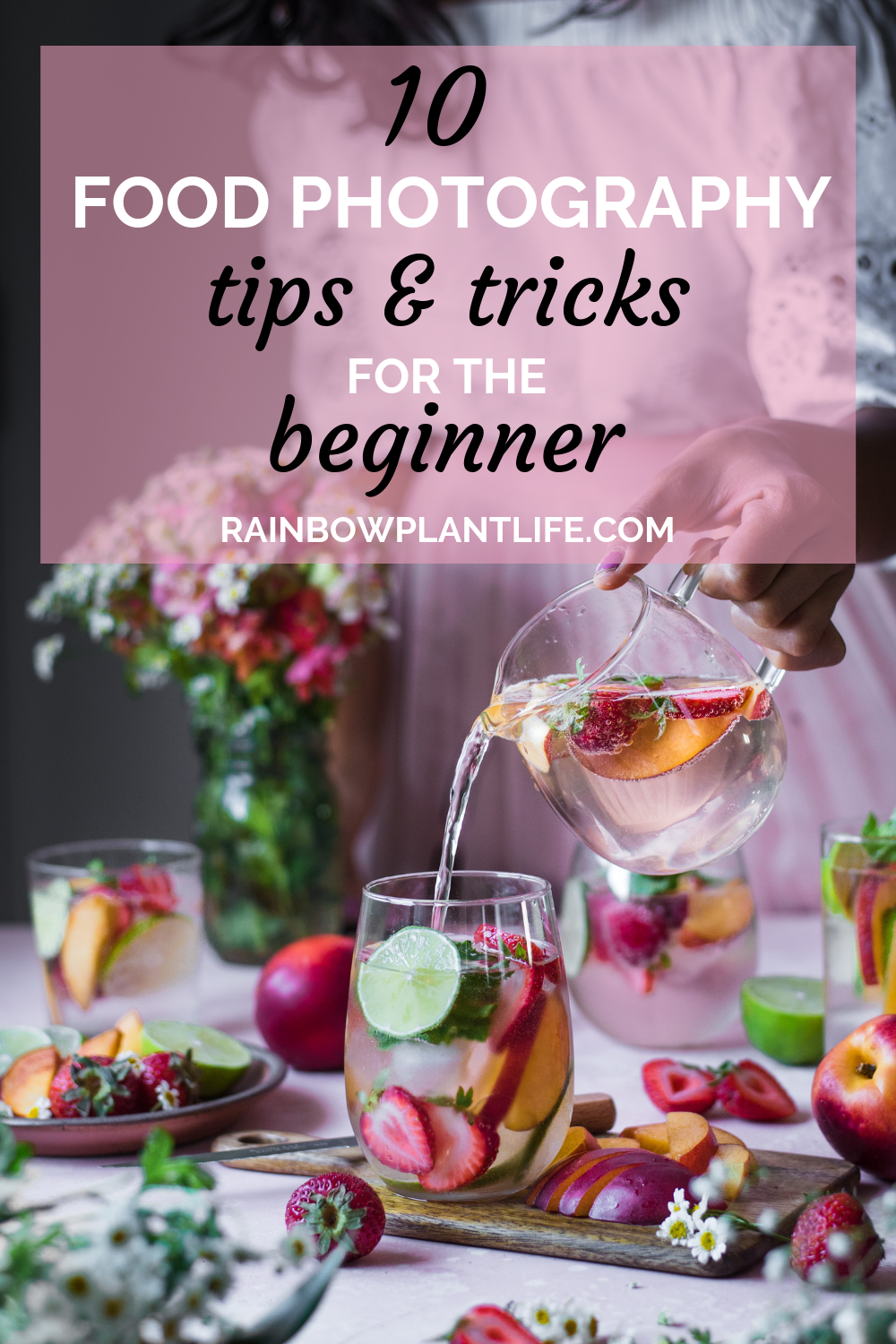
In Part II of this series, I gabbed about composition. Today, I want to talk about the importance of a tripod, food props, and food styling.
5. Learn the Magic of a Tripod
When I first started photographing food, I didn’t use a tripod and I didn’t understand the importance of using one. Starting to use a tripod* on a regular basis is one of the major things that really improved my food photography. Here’s are four key reasons why you should use a tripod when you’re photographing food (at least some of the time, or in my case, almost all of the time).
*I use two primary tripods for my photography. You can see which ones I use here!
A tripod affords complete stability
If you remember Tip #3 from Part I of this series, the lower your shutter speed is, the more motion blur you’ll have in your photos. While motion blur can create some beautiful art if you’re waving glow sticks at a rave, motion blur in food photography is almost always unwanted. It results in photos that aren’t sharp and that appear fuzzy.
And no matter how many planks you do at the gym, your contracted abs can only hold you so steady when you hold a camera. You will always be moving at least a little bit when you photograph free-hand. If you are clumsy like me and move a lot while your camera sensor is capturing a photo, you will likely end up with motion blur.
If you have a fast enough shutter speed, say 1/250 of a second or faster, you may not see any noticeable differences in sharpness between a photograph taken free-hand and a photograph taken with a tripod. But if your shutter speed is on the lower end, you will most definitely get some unwanted motion blur.
Not only does using a tripod avoid that (it stabilizes the camera in place so it’s not affected by your imperfectly perfect human body movements), but it can also help you achieve so much more in your photography!
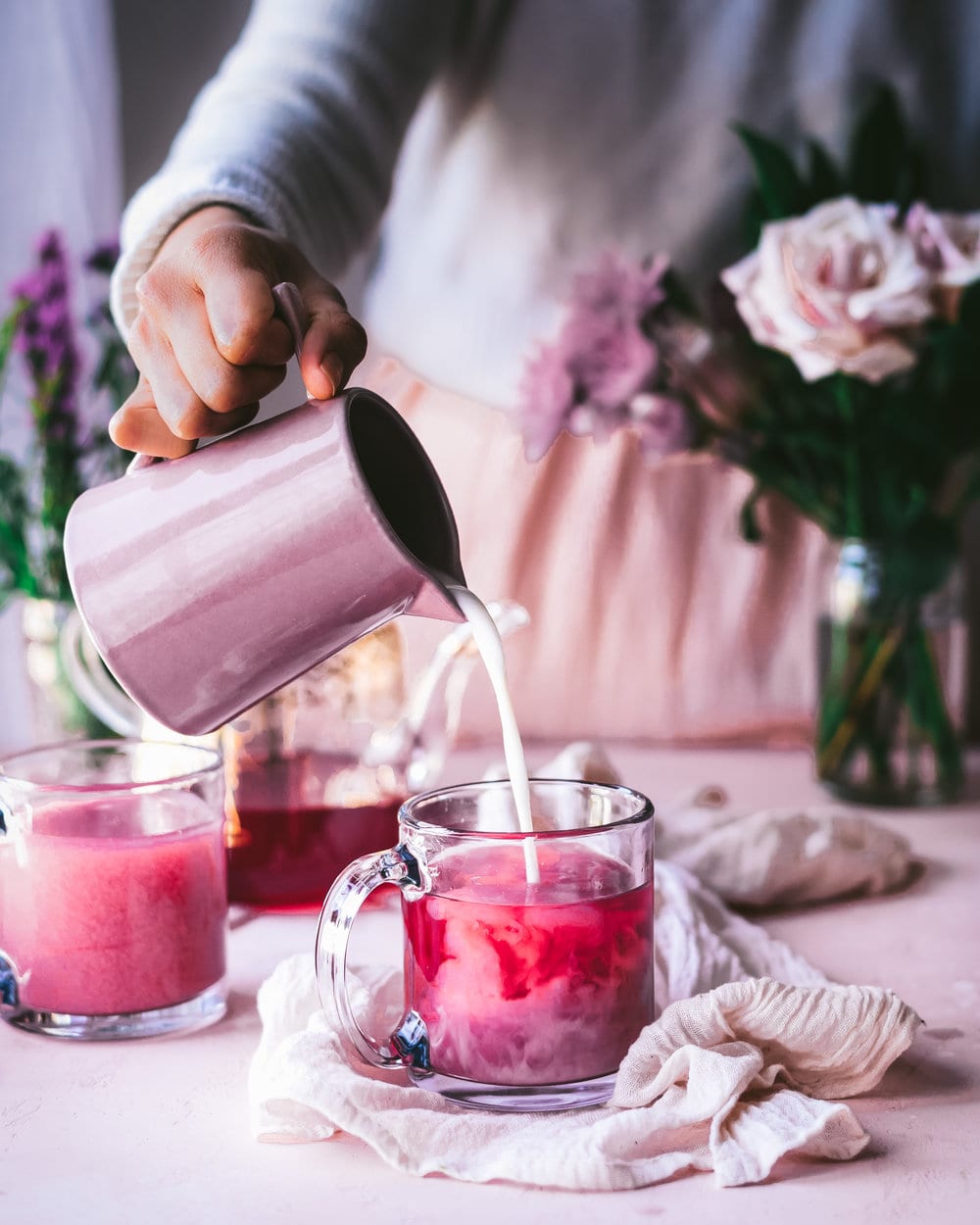
Taken with a tripod, shutter speed 1/200
A tripod enables you to take crisp, clear photos in low light
One of the things a tripod can help you do is take crispy clear photos even in low light. In Part I, I mentioned that, if you are shooting in low light, you will need to do at least one of the following things to add light:
-
Use a wide aperture (e.g., a low f-stop such as f/3.2;
-
Use a slow shutter speed (e.g., 1/20);
-
Use a high ISO value (e.g., 1600).
But if you want your photos to come out crispy clear and without any grain, you’ll want to leave your ISO low. If you opt for a low ISO value and are shooting in low light, your shutter speed will be quite low, particularly if your aperture is narrow (e.g., f/11). And with a low shutter speed, it will be impossible to shoot free-hand without having some motion blur.
A tripod solves this problem because the tripod holds the camera steady without any movement. With a tripod, you can use a very low shutter speed, even as low as 1 full second, and still capture a sharp photo due to the lack of camera movement.
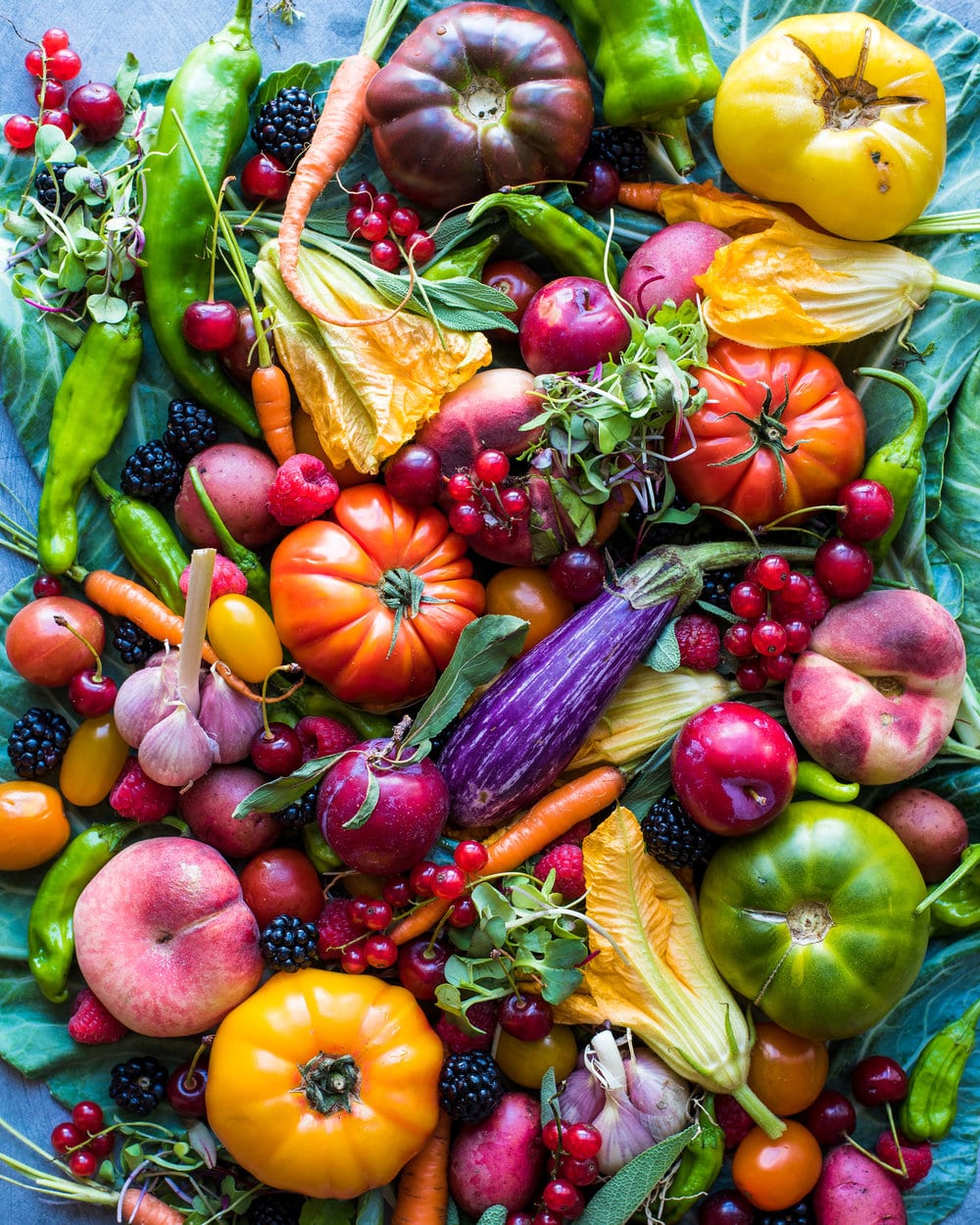
ISO 100, shutter speed 1/10. I took this shot an hour before sunset, when there was not too much light available. But as you can see, the details are still very crisp and sharp because I used a low ISO.
A tripod replicates the same angles
With a tripod, you can also replicate the same exact shot at the same exact angle because the position and angle of the camera will be the same. In contrast, when shooting free-hand, your body and position will inevitably move around, even if you don’t think it is.
Why would you want to replicate the same shot in the first place? Perhaps you’re testing out different aperture values and want to compare the same shot at f/2.8 and f/4.5. Or, perhaps you want to change a few elements of styling or prop arrangement but otherwise keep the frame the same, and want to compare the differences. Or, perhaps you want to make a stop motion video or a GIF of pouring juice in a glass (each frame will need to have the exact same angle and position in order for the video to look good).
A tripod enables you to tell a story
And of course, if you want to take those amazing maple syrup pour shots or show your own hands or body in a photo, you’ll need a tripod. Unless you have 4 hands and can manage it all once. Or an assistant.
I don’t have an assistant or four hands (crazy, I know), so I rely on my trusty tripod when I want to use movement or action in my photos. Also, you don’t need a tripod to tell a good food story, but it certainly helps when you want to add in movement or dynamism.
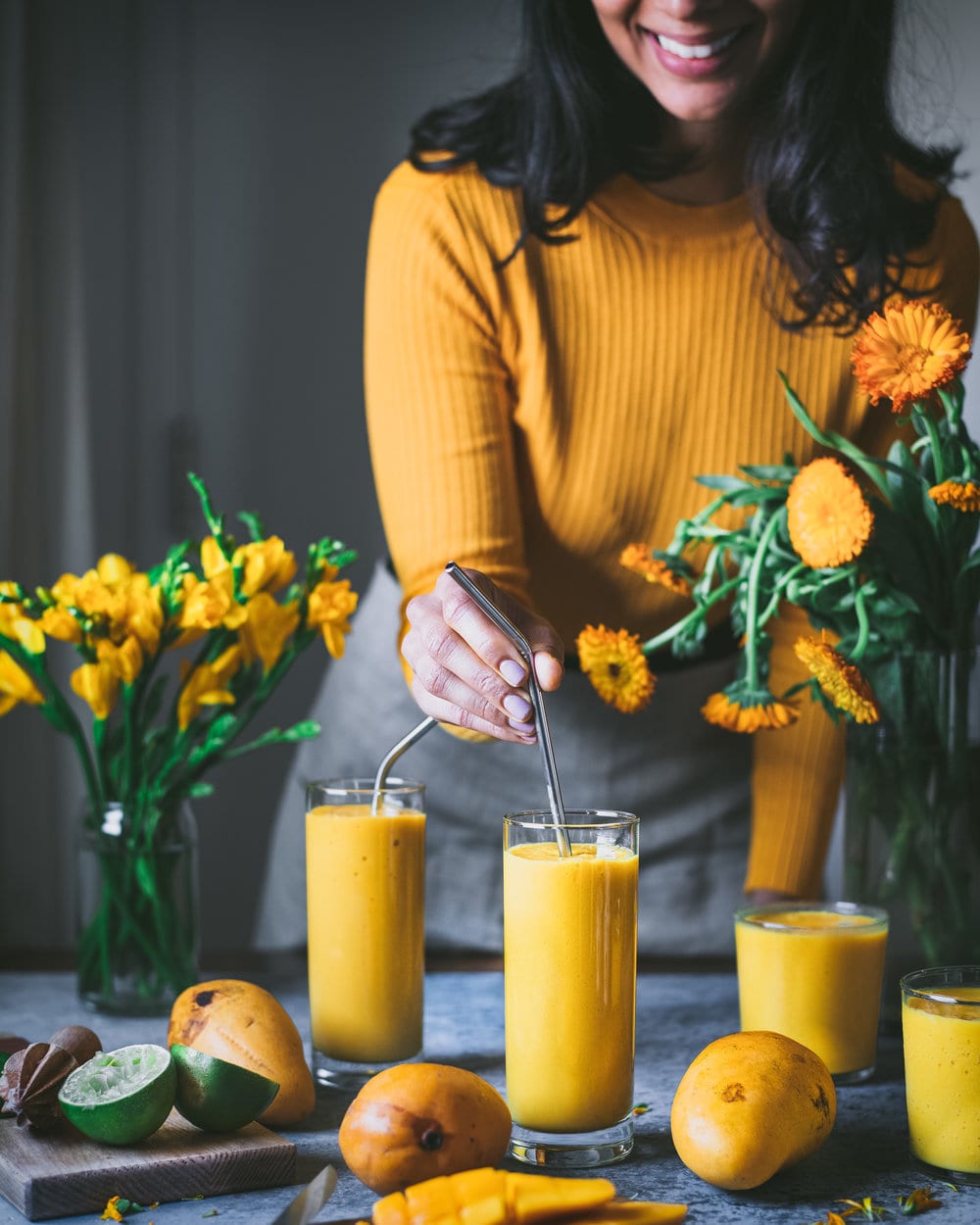
It took me about 10 attempts before my hands didn’t look awkward/enormous placing a straw in the glass. Because I used a tripod, I was able to compare each photo with the exact same composition/framing.
6. Invest in a Few High-Quality Food Props
These next two tips are specific to food styling, and I am excited to share them with beginners with the hope that they will help you avoid the mistakes I made when I first started out.
When I first started out with food photography, I was eager to get started, so I bought the first props I saw at kitchen and home goods stores, and I bought a lot. But, in an effort to save money, I would buy inexpensive items or shop at bargain stores (not cutesy thrift stores). However, I ended up wasting money because I grew tired of the hodgepodge mix of props that I collected. Plus, they simply looked cheap. Think multicolored dishtowels sold in 6 packs, a floral printed coffee mug, and bright orange measuring spoons. That’s why I now suggest investing in a few high-quality food props—emphasis on both few and quality.
These days I don’t buy food props nearly as often, but when I do, I buy items of quality. That doesn’t necessarily mean they’re expensive, though. If you scour (and I mean, really scour) Etsy and Ebay, you can find some amazing vintage items for a reasonable price. For more typical food props such as glasses or plates, subscribe to the mailing lists of stores like Crate & Barrel, CB2, West Elm, and Sur La Table to find out when they’re having sales. And don’t forget to check out your local thrift stores and flea markets.
In the example below, you’ll see that when I started food photography in 2016, my props looked, well, cheap. I was using brightly colored linens and poor-quality vinyl surfaces instead of investing in a professional photography surface (there are some higher-quality vinyl surfaces out there, but I wasn’t using them and, in any event, my photography skills were not strong enough to make the surface look good). Fast forward to 2018, and I’ve invested in high-quality ceramics and vintage flatware. More on my essential food photography props in a future post!
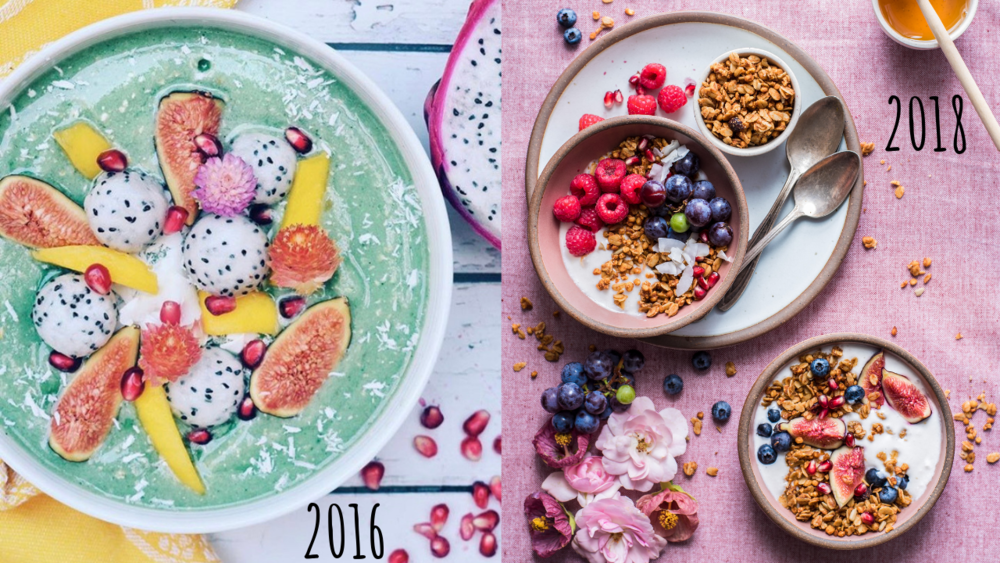
7. Get to Know your Food Styling Style
Over time, you will become more familiar in your own skin, and you will develop your own food style. In the beginning stages, think about which food photographers you admire and study their style. Not to copy it. That would be rude. But to help find your own inspiration for the colors, shapes, patterns, textures, and moods that you like.
I am constantly finding inspiration from dozens of my favorite accounts on Instagram, along with Pinterest images, and even food magazines or online publications. I might see one photographer’s use of dark moody lighting and another photographer’s beautiful capture of fresh produce and think “hey, I should take a still-life-type photograph of fresh produce with dark moody lighting.”
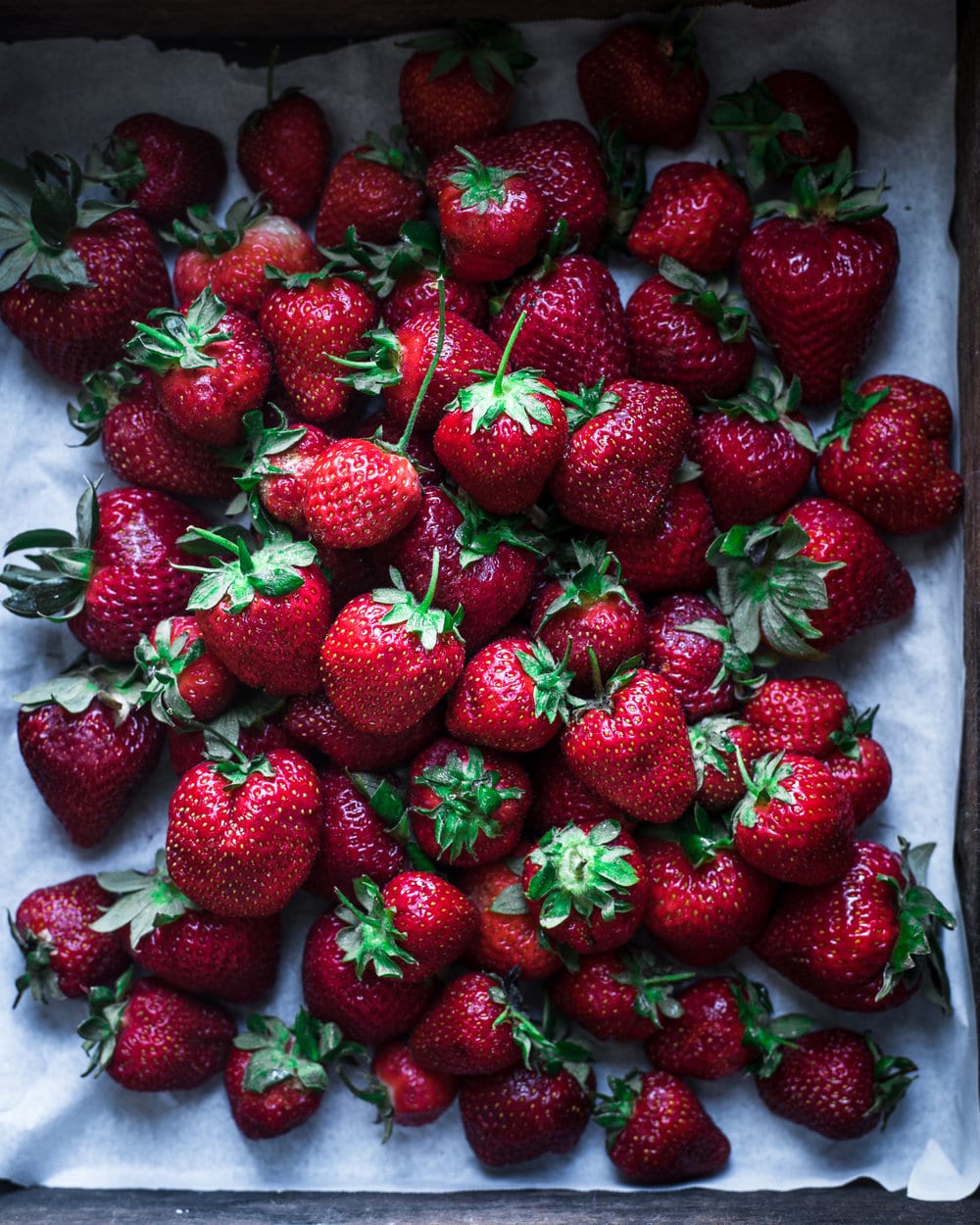
Also, think about how you want to portray your food and what feelings you want your food to evoke. Do you want your viewers to feel a sense of rustic coziness when they see your food? If so, focus on (but don’t limit yourself to) shooting traditional comfort foods, gravitate towards simple wooden boards and crates, choose muted colors over bright ones, and leave crumbs, spills, or other human elements in your photos to make it feel realistic and homey.
Alternatively, if you’re into the bright airy look, you may want to overexpose your images a bit (but not too much, as you can never fully recover these blown-out highlights) and focus on light colorful props, such as baby pink or baby blue linens and white or light-colored surfaces.
Regardless of which style or styles you settle on, the process of figuring it out is so much fun and once you discover what works for you, it’s so rewarding to see your style grow and evolve.
I hope you enjoyed the third part of this series on Tips for the Beginner Food Photographer! For more tips, head on over to Part I, Part II, and Part IV of this series.Lots of love,
Nisha

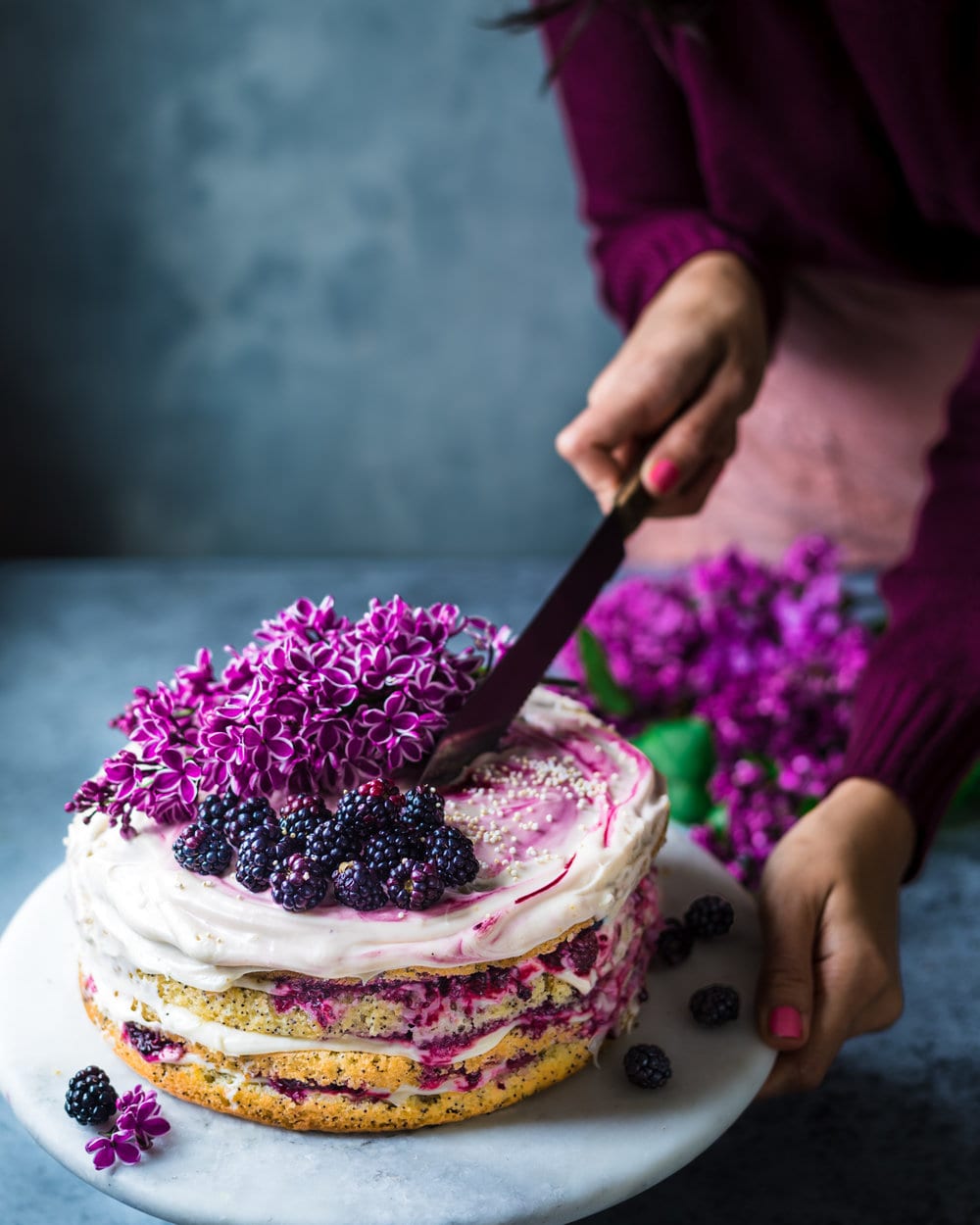
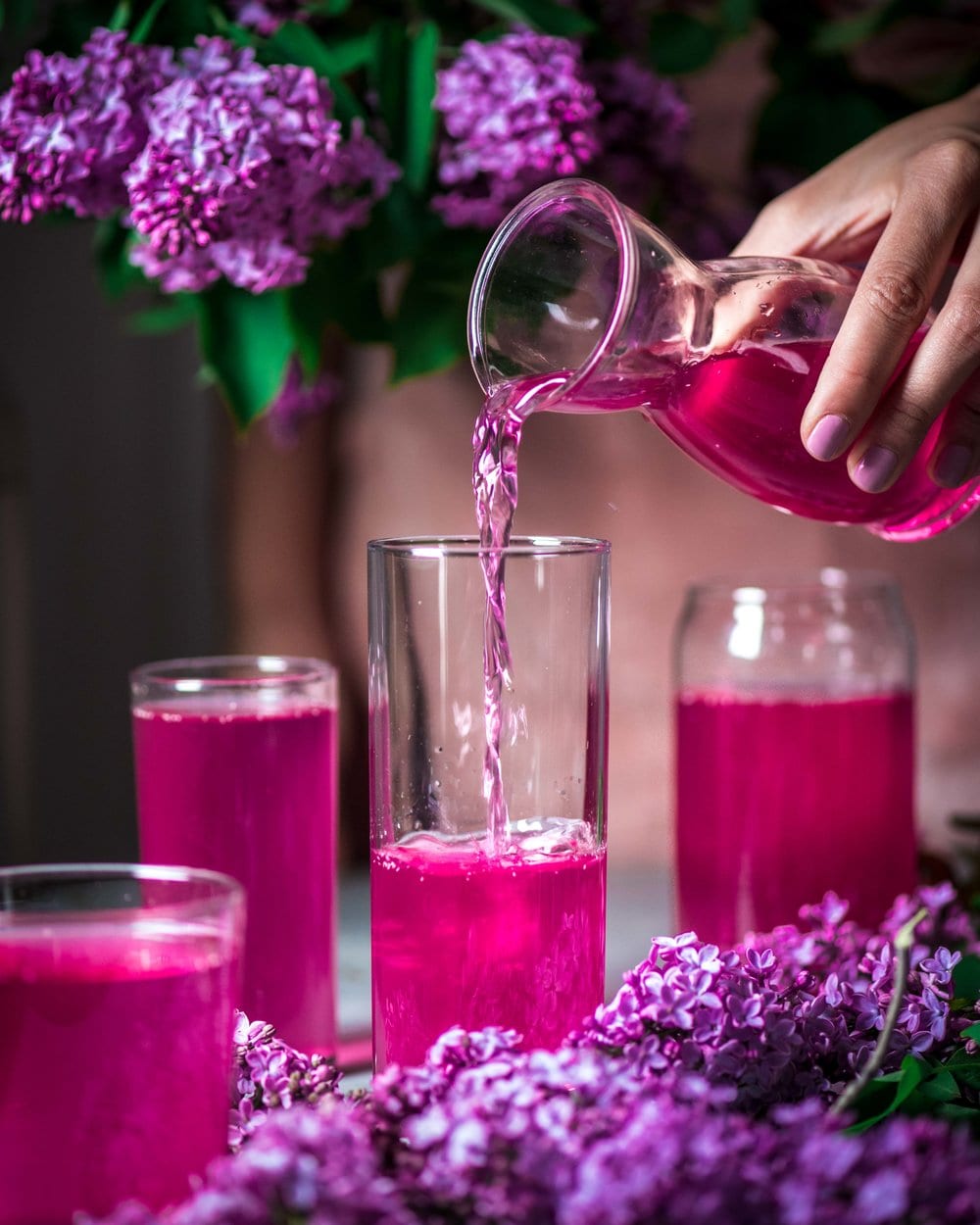
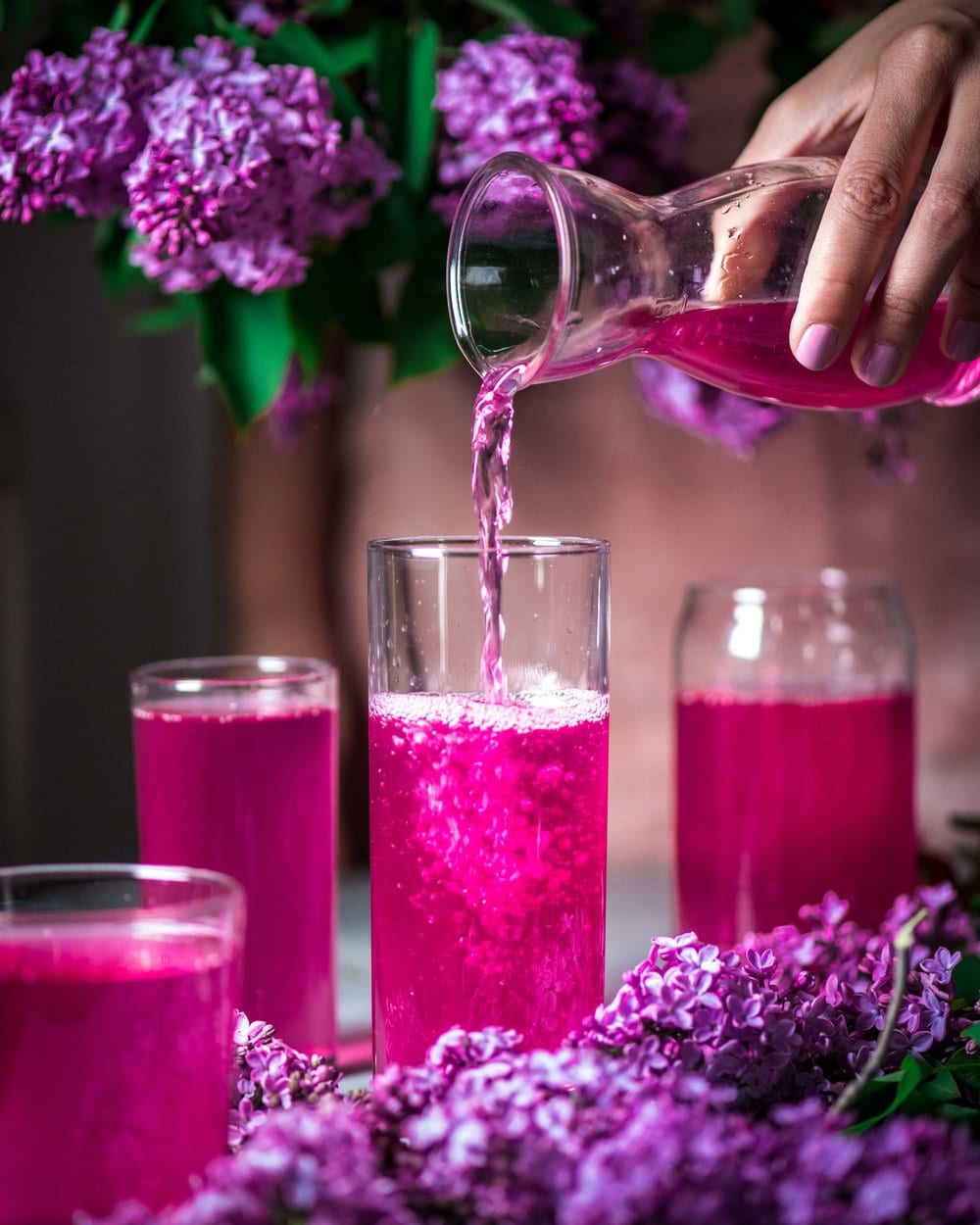



i just discovered you, about to launch a new co: getting the confused/beginner to a Healthy Lifestyle, aka: Greens Pimp-lol
LOVE everything about your business, I immediately share you with my daughter, as I grew up in NY, went to FIT (later got a degree in hotel/ Rest mgmt, so culinary trained and PT Certified, love all things health) and she lived in NYC for 5 years in pursuing entertainment/dance at the Joffrey Ballet School. We are both creative and love detail, so appreciate your detail, color palate and overall wealth of knowledge and how you share it. Wish i could send days going through your content, it’s like a treat! New business is very time consuming but know i hope to include you somewhere down the line, somehow, maybe an interview???! XO back at you, i feel your love for it all!
A very useful topic, many people who like to take photos will be grateful to you!
Hi Tara! That’s so nice to hear! Thank you for reading and stopping by :)
Hi, Nisha, such a great series. I would love it if you included your camera settings for each of the photos you use as examples. Like the strawberries above – such a gorgeous photo (they all are). Thank you for so many interesting tips, quality content, and a wonderful source of inspiration!
Hi Tracy! I am so happy this was helpful for you! I will try to update the series soon with the camera settings – I need to go back and find these photos to check out their settings first! Thank you for stopping by and for your lovely feedback!
Hi Nisha,
New subscriber here! Just wanted to let you know I think you have some of the best content out there in terms of quality and information. So easy to understand and presented so beautifully! Looking forward to improving my photography skills using all this valuable information.
Hi Paula! How sweet are you! I am so happy that my content has been helpful for you. I am grateful to hear that. Best of luck on your photography journey!
Hi Nisha! Great post. Thank you so much for sharing your tips and tricks. I have a super cheap tripod slash selfie stick (hence the cheap part). Even with that though, I am noticing a big difference from hand-held. I am such a novice with the camera lingo. Got some learning to do. I’m so psyched that we get to draw inspiration and know-how from you and all your amazing creations. I’ll be hanging around here often. I hope you have a fabulous weekend! :) Sharon
Hi Sharon! Thank you for stopping by. I am happy that the tips have helped you, even with your selfie tripod :) Can’t wait to share more photography related posts!
Hi Nisha,May I ask what tripod you have?
Hi Svetlana, I just updated the section under tripods with a link to all my camera gear, including the tripods I use! Here’s the link for ease: https://www.amazon.com/shop/rainbowplantlife?listId=DZFYZEBM344M
Hi Nisha,May I ask what lenses you use?Do you use one lens only for all your photos or do you have different lenses?
Hi Luisa!
I primarily use a 50mm f/1.8 lens and a macro 105mm lens for food photography. They are compatible with my Nikon full-frame D750 camera. You can see all the camera/lens equipment I use at rainbowplantlife.com/shop :)
I love your work – thank you so much for sharing your tips! Where did you get this dark "asphalt-style" board/backdrop? #musthave <3
Hi Elaina, thank you so much! You are so sweet! I get my boards from eclectic lab designs http://eclecticlabdesigns.com/ :)
Hey girl! Your tips are amazing, thanks so much for sharing them!!!! I need to start using my tripod more, I am so bad at getting it out and actually using it!
We need to meet up soon and get tips and tricks off each other. Hope you’re having a lovely Saturday so far! XXXX Maria
Hey, girl, hey. Thanks for visiting. Your photos are gorgeous so I’m not sure you need my tips :) But a tripod is so useful once you get over the annoyance of using it. Would love to meet you in person one day :)
Such a beautiful tutorial, Nisha! And you have explained everything so well! Thank you so much for mentioning me! You are a sweetheart and I love you Xx
Hi, love! You’re very welcome :) And I’m flattered you think I explained it well because you’re such an amazing photographer!
Wonderful tutorial Nisha! I started using my tripod only recently and love it. However I need to buy a better one as mine was pretty cheap. Can you recommend a brand? Much love, Ela
Hi, Ela! Thank you for stopping by :) Using a tripod makes such a difference. Manfrotto makes reliable and sturdy tripods in many different varieties :)
Thank you Nisha, I will check them out :)
Thank you for visiting, Ela :)
Terrific article Nisha. You explain it all so clearly and it’s really helpful. And I love the acknowledgement about realizing you have your own style, it’s so true, it kind of appears by itself, doesn’t it? And so true about the tripod. I can see the where I got one in my feed, haha! xx
Hi, Dee! Thank you for your lovely comment. I’m happy you found it helpful and clear! It definitely takes some time to develop and get comfortable with your own style, but the process is so much fun :)
I laughed out loud about the cheap props. Don’t I know about that. Gotta stop doing that and invest in nicer ones!
Haha I’m glad you had a good laugh Renee! It’s a dilemma because you don’t want to break the bank but over time, buying lots of cheap props and tossing them out costs just as much, if not more!
Great tips Nisha! Love your tips on tripod and comparison to planks! hehe. I also didn’t understand the importance of a tripod before getting one…and omg what a difference it makes! It really helps with that extra “crisp” look to photos!
xx
Hey Jess! Thanks so much for dropping by. Haha, yes, it’s impossible for me to shoot freehand and not shake. Maybe I should work on my planks? A tripod is a total game changer!
I’ve been blogging for about three months now, and while my photography has improved exponentially, but it’s still not quite where I want it to be – these tips are really helpful, you do into a lot more detail than some other sources. I love your photos – thanks for the tips!
Hi, Kate! Thanks for stopping by and for your kind words. It’s so rewarding to be able to notice improvements in your photos, right? I hope these tips will help you see even more improvements :)
Okay okay, I guess it’s time for me to get familiar with my tripod. You brought up some valuable points and I have a feeling using one would bring my photography to the next level. Totally know what you mean about all of the cheesy food props. In the beginning, I did that too! Ugh, totally hideous! Live and learn, right?
Yes! If you have a tripod, you gotta use it :) I know it can be unwieldy but once you start using it, it just becomes second nature. And seeing my old photos with those props makes me cringe!
Loving these tips, Nisha! I finally bought a tripod about a year ago, after trying to get by without one for the longest time, and have seen such a big difference. I work a lot in low lighting and now I’m able to take pictures at a lower iso and shutterspeed, which helped with the graininess I used to experience using a higher iso. You’re right, it does help with those hand shots too! Definitely worth the investment!!
Hi, Joscelyn! So happy you love the tips. I shoot mostly in low light too because I live on the ground floor so yes, having a tripod is key! I took a photo at ISO 800 the other day because I needed a fast shutter speed and the grain was so noticeable! Initially, I didn’t want to spend the money on a quality tripod but it’s so worth it.
I LOVE your photography, Nisha. And you have such nice hands! Thank you for the inspiring photography posts.
Hi Sarah,
Thanks so much for your kind comment. Haha, I am sort of embarrassed by my hands because they’re so large so thank you for saying that :)
Thank you for these amazing tips, Nisha! I’ve so enjoyed reading this blog series, and cannot wait to put it into practice. You’re a fantastic food photographer, and it’s been a joy to see your skills and talent develop even more!
Hey, Sam! You’re so welcome. It’s so great to hear that you’re finding these useful. And thank you for your kind words :)
I think I’m the first person to read this post cuz I clicked on it as soon as you posted on instagram haha. I’m learning so much from you. I’ll never be as good but I’m trying so thank u!
Haha thanks so much for visiting so quickly, Jeannie! I’m happy you’re learning and I can’t wait to see your progress!